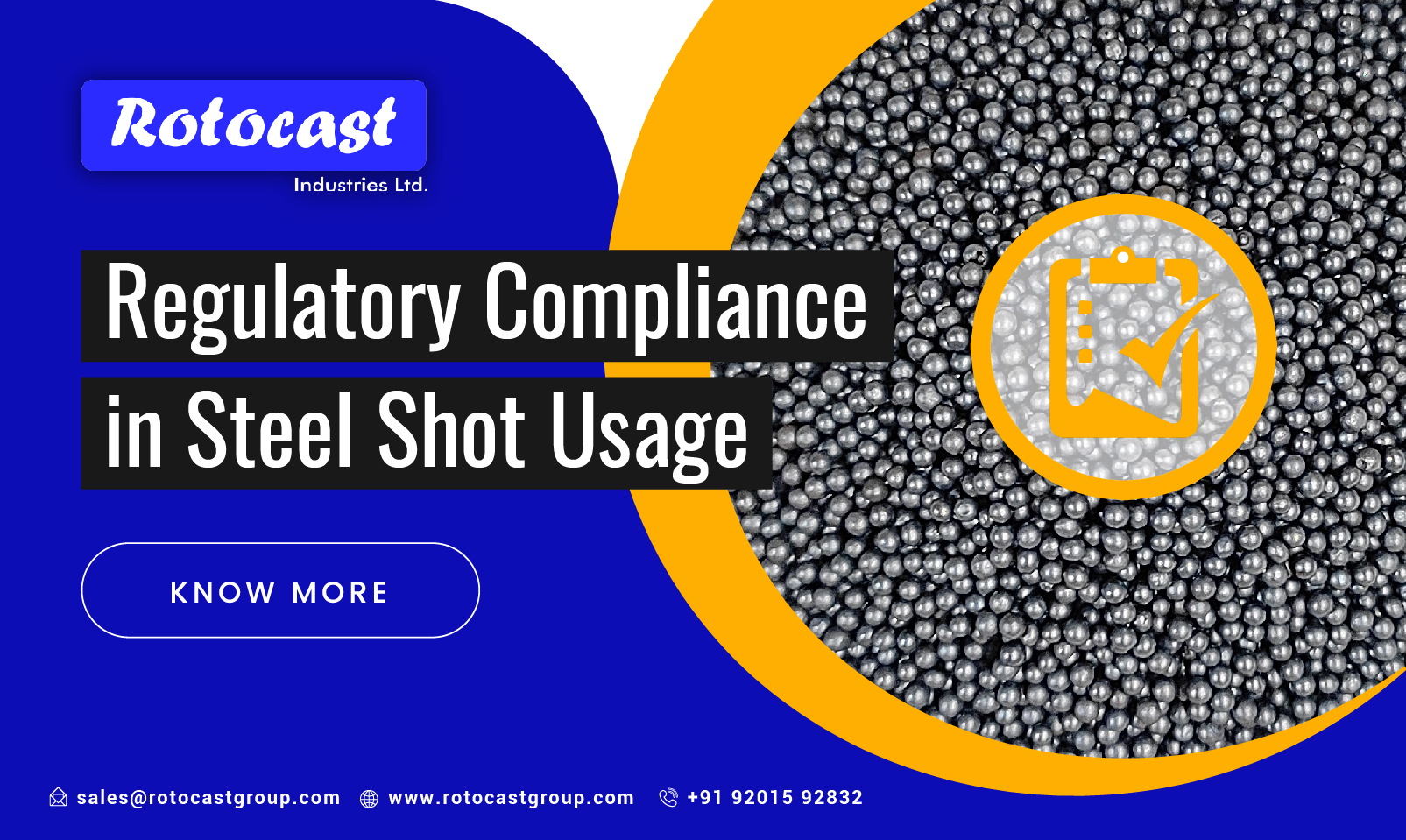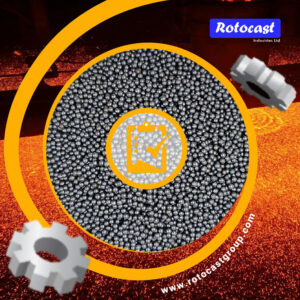
- Rotocast
- Feb 29, 2024
- Uncategorized
- 0 Comments
Regulatory compliance regarding the usage of steel shot typically revolves around environmental regulations, workplace safety standards, and product quality standards. Here are some key aspects to consider:
Environmental Regulations:
- Waste Disposal: Proper disposal of used steel shot is crucial to prevent environmental contamination. Regulations may dictate specific disposal methods, such as recycling or proper containment to prevent leaching into soil or water bodies.
- Air Quality: Steel shot blasting operations can generate dust and airborne particles. Compliance may require the use of dust collection systems and adherence to emission standards to minimize air pollution.
- Water Pollution: Steel shot blasting can produce wastewater containing contaminants. Compliance may entail treating wastewater before discharge to meet local water quality standards.
Workplace Safety Standards:
- Personal Protective Equipment (PPE): Regulations often mandate the use of PPE such as eye protection, gloves, and respiratory protection to safeguard workers from hazards like flying debris and airborne particles.
- Equipment Safety: Compliance may involve regular inspections and maintenance of blasting equipment to ensure safe operation and prevent accidents.
- Training and Certification: Workers involved in steel shot blasting may need to undergo training and certification to handle equipment safely and understand proper procedures.

Product Quality Standards:
- Material Composition: Steel shot used for blasting should meet specific material composition standards to ensure effectiveness and consistency in the blasting process.
- Surface Finish Requirements: Depending on the application, there may be standards regarding the surface finish achieved through steel shot blasting, ensuring it meets required specifications.
- Quality Control: Compliance may involve implementing quality control measures to monitor the effectiveness of steel shot blasting and ensure consistent results.
Regulatory Bodies:
- Environmental Protection Agency (EPA): Oversees environmental regulations related to waste disposal, air quality, and water pollution.
- Occupational Safety and Health Administration (OSHA): Sets workplace safety standards and regulations to protect workers from occupational hazards.
- Industry Standards Organizations: Organizations such as the American Society for Testing and Materials (ASTM) may establish standards for steel shot quality and performance.
Compliance Documentation:
- Permits and Licenses: Depending on the jurisdiction, permits or licenses may be required for operating steel shot blasting facilities.
- Record-Keeping: Maintaining records of equipment inspections, safety training, waste disposal, and quality control measures is essential for demonstrating compliance during inspections.
- Audits and Inspections: Regulatory agencies may conduct audits or inspections to ensure compliance with relevant regulations.
Compliance with these regulations not only ensures environmental protection, worker safety, and product quality but also helps in maintaining a positive reputation and avoiding potential legal consequences. Therefore, it’s crucial for businesses using steel shot for blasting to stay informed about applicable regulations and implement appropriate measures to achieve compliance.

